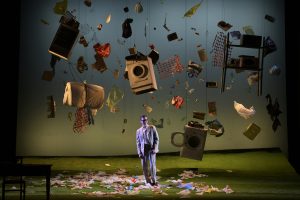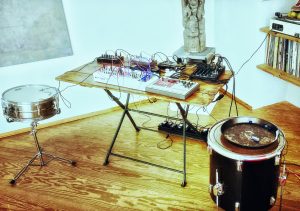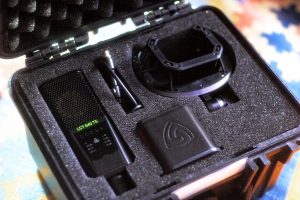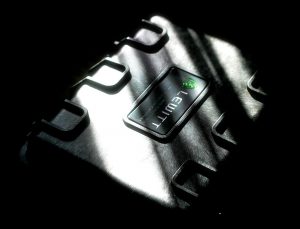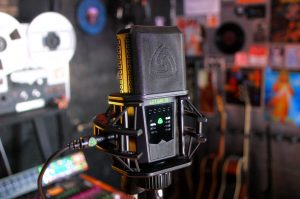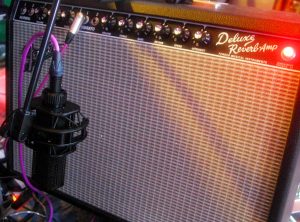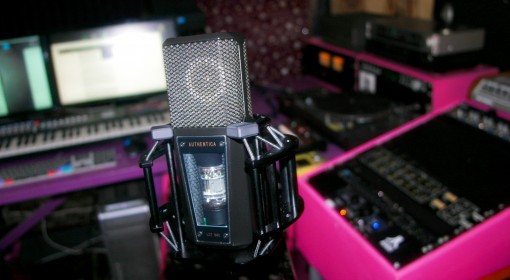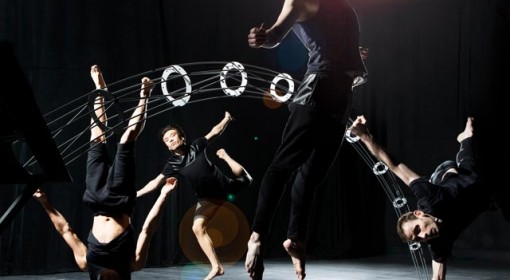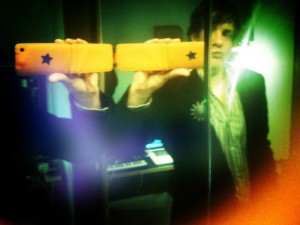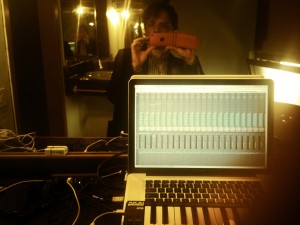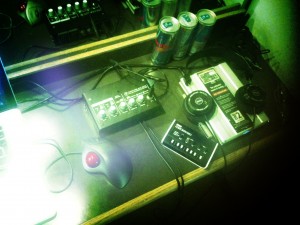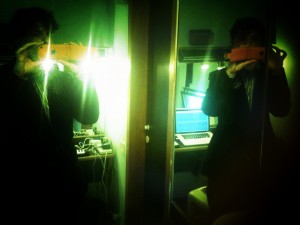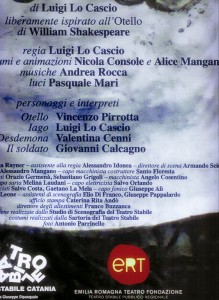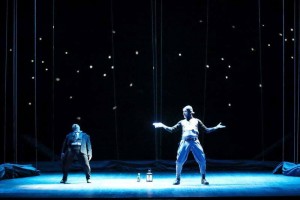PA’
I’ve just finished the musical score for Marco Tullio Giordana’s PA’, based on a selected choice of Pier Paolo Pasolini’s prose and poetry, as poignant and prophetic as ever.
The show was produced by the Teatro Stabile del Veneto, it debuted in November at the Teatro Goldoni in Venice and is currently touring Italy (Milan, Verona and Padova), with a reprise which will also take it to Rome next year.
The reviews have been great so far, which makes me happy because working on it was such a good experience.
***********************
Ho appena terminato la colonna sonora per PA’ di Marco Tullio Giordana, spettacolo basato su una scelta selezionata della prosa e della poesia di Pier Paolo Pasolini, rilevanti e profetiche come sempre.
Lo spettacolo è stato prodotto dal Teatro Stabile del Veneto, ha debuttato a novembre al Teatro Goldoni di Venezia ed è attualmente in tournée in Italia (Milano, Verona e Padova), con una ripresa che lo porterà anche a Roma il prossimo anno.
Finora le recensioni sono state ottime, il che mi rende felice perché lavorare per questo progetto è stata un’esperienza così positiva.
If Less Is More Imagine How Much More Could More Be
This is a short video of the the sound installation that I created as a soundtrack to my solo photography exhibition at the wonderful Artbase Gallery in Wiesbaden.
It’s called If Less is More, Imagine How Much More Could More Be.
It’s a semi-unconscious autocratic machine that will, amongst other things, whisper to you in Japanese, roll some glass marbles and play the snare drum.
Why it does it is an open question.
Stream of Unconsciousness
This is part of an online performance from 10 months ago, with some extra editing I did for it – I’m catching up with posting as it’s been so busy…
Kamura Obscura Electro
On Sunday the 13th Atsuko Kamura and I will be opening for Acid Mother’s Temple, who happen to be one of my favourite bands, in Birmingham.
I’ve been producing and recording Atsuko’s new single Nina Bargain/ Merry Go Round for the last two months so we’ll be presenting it live before it will come out (on vinyl and digital download versions) on Transmission Boutique in the next weeks…
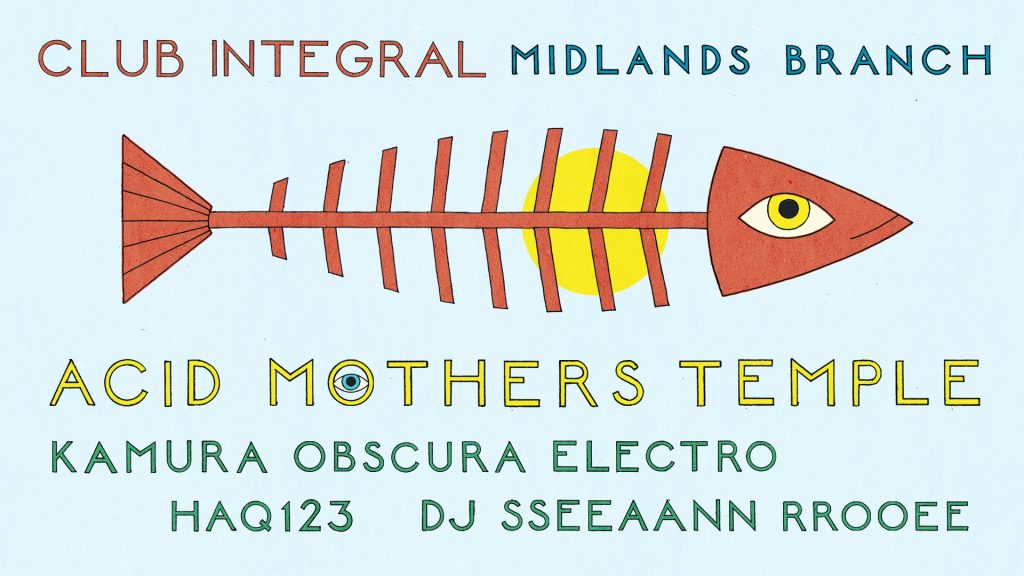
| p | The Edge79-81 Cheapside, B12 0QH Birmingham, United Kingdom |
Angelica Festival
I’m very lucky to have been invited to perform with John White and MJ Coldiron at the AngelicA Festival in Bologna, probably Italy’s biggest and best new music festival. We’ll be sharing the stage with some fantastic artists, including Tashinori Kondo, Peter Brotzmann, Mark Knoop, Akio Suzuki and Aki Honda.
Thank you very much Walter Rovere, Proposte Sonore, ANTS Records!
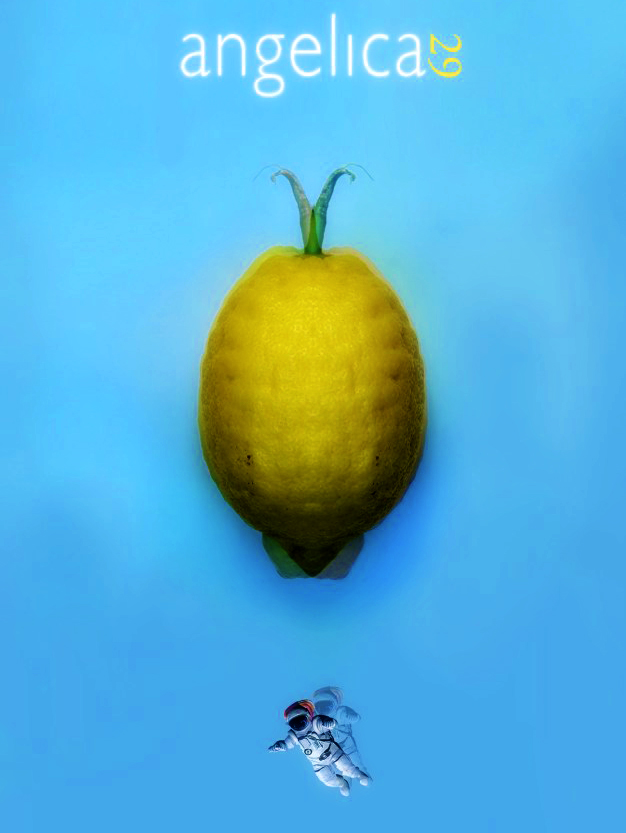
Club Integral Radio
The excellent people at Club Integral Radio have invited me on the show to play some of my film and dance theatre music and have a talk about it.
Wednesday 27th of February at 21:30, Resonance FM, 104.4

Livebatts! CD Launch
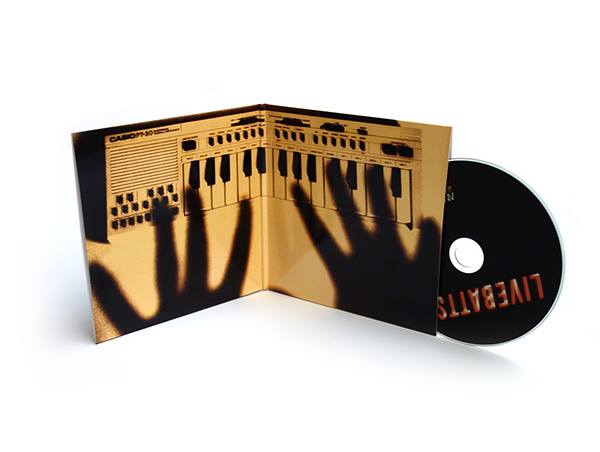
10th of November at the Round Chapel in Clapton – Livebatts! will be playing together again after way too long to launch our CD, which was beautifully produced by Ants Records.
Richards Sanderson and Nancy Ruffer will be joining us on stage.
I will be also playing with Peter Marsh (bass) and Tom Clarke (drums), this is a new trio which is still unnamed but will soon be 🙂
And finally the infamous Bad Dog, composed by John White and myself, will be joined by the excellent Blanca Regina.
SOFT MONSTER VIDEO
Here’s a video I made for my piece Soft Monster, a personal take on turntablism. Awful thumbnail I know. Just wait and see the rest. The beautiful spirals are plundered from Marcel Duchamp’s 1926 Anemic Cinema.
Drum solo by the ubiquitous Babak Larousse and voice by the super excellent Maya Aliman. Enjoy! in a way…
Lewitt LCT 640 TS REVIEW
It’s safe to say that microphone design has never been the most forward looking segment of studio engineering. That might be because microphones that performed brilliantly appeared relatively quickly in the history of recording technology, and when those microphone acquired legendary statuses many designer’s goals concentrated towards emulating those iconic sounds. It’s also because as studio heads we tend to be traditionalists and stick to things we know or that we have seen other people using successfuly…
However a few companies have come up whose philosophy is to use modern technology to break new ground into what can be done with microphone performance.
A few months ago I reviewed Lewitt‘s LCT 940, a hybrid Valve (Tube)/ Fet condenser mic with the ability to dial in any combination between the two circuits. It has quickly become my main mic for recording vocals. I also regularly use a pair of LCT 550s, an eerily quiet (self noise at a theoretical zero) cardioid condenser with a superior transient response and a sound that balances focussed yet smooth highs with a huge bottom end.
The microphone I have here right now is the new LCT 640 TS, an offspring of Lewittt’s best selling multi pattern LCT 640 but with a some very special capabilities. The LCT 640 TS is a dual capsule microphone but not in the conventional sense: the signal from each capsule can be recorded separately and combined offline (courtesy of a bespoke plugin called the Polarizer) to change the polar pattern response after the recording has been made. Yep.
The LCT 640 TS can also use the separate capsule circuits to easily make MS stereo recordings that do not need complicated decoding processes.
So once again, we have something quite special from Lewitt on our hands.
The LCT 640 TS comes with an industrial grade heavy case, similar to the one that accompanies the flagship LCT 940, but about half the size.
Inside are the usual Lewitt style semicircle shock mount (very useful for placing the mic almost flush to the source should you want to do so), a mini XLR adapter with a Neutrik XLR on the other end, which is needed to use the mic in Dual Output Mode (DOM from now on), a soft padded pouch, the customary paperwork and a very welcome little accessory: a small magnetic, double meshed popper stopper that clicks in place over the shock mount.
This is a great solution since the popper stopper is one of those items that are a nightmare to carry around as they tend to break or tear very easily. My only worry was that, being so close to the grille, it might not be effective enough in preventing plosives, but after having used it for a few days it has proved itself to work perfectly well.
It even stays on if you like to mount the mic upside down. Lewitt, please make a larger one for the 940!
At a first glance the LCT 640 TS looks pretty much the same as it’s siblings from the Lewitt stable, except from the gargantuan sized LCT 940.
It’s large enough not to deflate vocalists’ egos but also light enough not to make mic stands droop when placed in akward positions or when mounted on an amp clamp such as the Wishbone Hook v.2 I’ve mostly been using with it for recording electric guitar (see photo). The construction is reassuringly tough with a dense zinc body and a very solid grille.
In terms of specs the LCT 640 TS shows 11 dB(A) measured in cardioid, not quite close to the theoretical 0 of the LCT 550 but absolutely fine for any real-world scenario. Max SPL is a good 132 dB, and that’s without using the pre-attenuation options.
The familiar buttons and illuminated leds select and highlight the high pass filters, set at 40, 80 and 160 Hz, the five multiple polar patterns (omni, wide cardioid, cardioid, super cardioid, and figure of 8) and the trademark Lewitt Key Lock and Clipping History functions.
Testing it as a “normal” microphone the LCT 640 TS has the family Lewitt sound that I got to know and love: clear, detailed, true to the source and yet somewhat flattering and most importantly devoid of harshness or sibilance.
Compared to the Lewitt condensers I have here the LCT 640 TS is slightly warmer than my LCT 550s, a mic whose main strength is the almost inexistent self noise and amazing transient response – and somewhat similar to the 940 in FET mode, which is to say very detailed but with a certain heft – obviously with some differences due to the smaller size of the basket.
It doesn’t sound quite as big on vocals as the LCT 940 with some of the valve dialled in but it’s very much in the same ballpark.
The LCT 940 has quickly become my to go microphone for vocals and most solo instruments so that is a very encouraging start.
Just like with the 940, the polar patterns sound solid and well defined.
In order to operate the LCT 640 TS in DOM the mini XLR adaptor has to be plugged in and phantom power applied to both capsules.
Needless to say that you will need a stereo preamp.
The capsules will take about twenty seconds to charge. Then the centre button has to be pressed for two seconds – the green triangular logo illuminates to show that the mic is in DOM, and the polar pattern indicators are, of course, disabled.
You have to make sure that the gain on both channel is matched, which is easier to do accurately with digitally controlled preamps such as the ones on my Metric Halo ULN-8, but in practice I have found it to be no problem when working with all analogue preamps.
Just like the polar patterns in “normal” mode DOM is remembered after phantom power has been switched off so the operation must not be repeated each time the mic is powered on.
The mini XLR does not click in but it’s fit is more than solid enough to avoid having to worry about it coming off. The tiny Lewitt logo on it acts as a visual indicator (it has to face forward) so that connecting it in a dimly lit environment is not a problem.
When the mic is on the shock mount the adaptor will be placed between one of it’s two plastic elements. Its very important to remember to remove the adaptor before taking the microphone out of the shock mount, otherwise there is a serious risk of straining the Mini XLR connector.
I kept the 40 Hz filter on for all of my tests, as it doesn’t prevent the good juices from flowing into the sweet music but it stops unwanted sonic sludge crawling up mic stands and amp cabs. This is something I would always recommend to do – unless you’re attempting to record the Brown Note , or the Song of Perseus – in which case you’re on your own, kid… 
All the samples are 44.1 Khz, 24 bit Wavs, the cables used were Van Damme XKE, and the preamps are specified on a per example basis
Nico Sabatini is an in demand session guitarist, with work ranging from top West End musicals to writing, arranging and performing for several jazz and rock ensembles.
For testing the LCT 640 TS he chose from his collection a gorgeous handmade Patrick Eggle Etowa 000 acoustic.
The LCT 640 TS was well up to the task – you can feel the wood and the zing of the strings in every take.
When auditioning the recordings, Nico said that that is the sound he hears in his head when recording acoustic guitar – quite a compliment to a microphone.
We recorded a jazz improvisation in cardioid, omni and figure of 8, plus a file where I automated the Polarizer plugin to sweep through the patterns.
The preamp used on Nico’s recordings is an Audient asp 880.
This is the cardioid version:
Here is the omni version, which sounds a bit less close and more airy (as much as the very damped room we recorded in allowed):
The Figure of 8, more hefty:
And the take where the Polarizer plugin does a sweep through all the different patterns – Omni (0.0), Cardioid (0.12), Figure of 8 (0:24), Back Cardioid (0:35) and back to Omni (0:44)
Last but not least, this is a second take recorded in glorious stereo, simply tilting the microphone on it’s side. Recording in MS stereo is clearly not a sideline feature of the LCT 640 TS, listen for yourself!
Next, we recorded some finger picking
First in cardioid:
Then a second take in stereo:
And this is the first take again, with an automated pattern sweep
Omni (0:0), Cardioid (0:8), Figure of 8 (0:14), Rear Cardioid (0:20), Omni (0:24).
Last, we put down some strumming, which came out beautifully balanced:
Cardioid:
Omni:
Figure of 8:
And a take in stereo:
Later in the week, I worked on a track with the brilliant Elvin Brandhi, and we set some time aside to record a snippet for this review.
I really like how the figure of 8 brings out the chest details in her voice, but the other two patterns sounds great too, full, detailed, natural and present.
For these takes I used a Drawmer 1960 with a touch of compression – a couple of dbs on peaks.
Cardioid:
Figure of 8:
Omni:
Here are some samples of my Jazzmaster.
I’m normally weary of recording electrics with a condenser for fear of harshness or a rendition that is too clinical, and prefer a dynamic mic such as the Shure SM7B, Lewitt MTP 440 DM or Heil PR30.
Listen to how the guitar and amp were captured in a big, warm organic manner. I also uploaded a take of just the compressed back capsule, an interesting roomy sound that could work well in a spacey mix.
The chain for this take was Jazzmaster > Celmo Sardine Can compressor > Eventide TimeFactor > Fender Deluxe Reverb.
The preamps are from the Metric Halo ULN-8
Cardioid:
Omni:
Figure of 8:
And another take, Rear Cardioid with compression (From the Metric Halo’s DSP)
Then I tried recording a sub octave fuzz sound courtesy of the Catalinbread Perseus, whose name is borrowed from the above mentioned Perseus Constellation, where a husky voiced black hole emits the lowest sound recorded, so far, in the Universe: 57 octaves below B-flat.
This is a super quirky, super cool and very unpredictable analogue pedal whose tracking can be rather idiosyncratic. It’s not an easy sound to grab, my dynamic mics tend to feature just the bigness without the rasp, my ribbons even more so.
The LCT 640 TS captured a monster sound in all its might. Granted, it won’t be everybody’s favourite tone, but that makes me like it even more…
For this take I took the LCT 640 TS off the amp clamp and placed it on a stand about a metre away from the amp.
The chain was: Vox Snake Charmer compressor > Catalinbread Perseus > Catalinbread Dirty Little Secret MkIII > Xotic Effects EP Booster > Eventide TimeFactor > Fender Deluxe Reverb.
Cardioid:
Figure of 8:
Omni (sounds huge!):
The last two samples are some percussion recorded in stereo. The LCT 640 TS did great, my playing leaves a lot to be desired.
Both were done with the Drawmer 1960 and a touch of compression.
Egg Shakers:
Bongos:
The LCT 640 TS will be particularly appreciated by those who see writing and recording as part of one organic creative process.
There are so many things I haven’t tried yet that I’m looking forward to do with this microphone. Automating the pattern response can be used during a mix as a more natural alternative to eq. Keep a part on omni, or even use the back capsule to make it sink into the mix and turn it to figure of 8 to bring it to the fore in the chorus… Very interesting and exciting stuff.
For someone like me, who often works for productions where sounds that come off the beaten path are highly desirable – such as scoring for contemporary dance companies – what can be done with this mic is invaluable: applying different effects to the two capsules whilst tracking, experimenting with compression on the ambiance whilst keeping the main signal close and focussed, working creatively on the stereo image….
It’s also perfect for those who record themselves or have to be both the producer and engineer, which means many of us. The things you can do with this microphone would be very hard and long winded to replicate with a different setup. It allows to keep options open and not having to run between the recording and control rooms, which is a real vibe killer.
Having someone popping into the recording room for changing a polar pattern at the last moment is a real downer, and quite disrespectful, for an artist that has just switched his/ her brain to performance mode.
Then there are the stereo capabilities: MS recording can be a real chore to do in the conventional way, which is why it was never part of my recording routines – until now.
And flipping the mic on it’s side to do a stereo take is definitely more endearing during a busy session than having to rig in a second mic.
It would also make the perfect “travel” mic for those who need to travel light – a microphone to bring on location with which you can do just about anything.
And of course it’s also a great tool for larger studios and engineers who want to keep their options open until the mix phase.
The LCT 640 TS is not only a box of tricks though. It is also, and perhaps in the first place, a very, very good sounding microphone that you can throw at just about anything trusting that you will get a great result.
The LCT 640 TS will have an expected street price of €899. I think that is more than fair for a microphone that sounds so good and can do so much.
Pasolini
I’m currently working on the score for Luigi Lo Cascio’s Il Sole e Gli Sguardi (The Sun and the Gazes), based on Pierpaolo Pasolini’s poetry. It’s a collaboration between the CSS Teatro stabile di Innovazione in Udine and the Teatro Metastasio in Prato.
It will be shown in Udine in November and December 2015 and in Prato in May 2016.
I’m collaborating with some fantastic musicians, we’re all very excited and determined to keep it that way. More soon!
Sto lavorando sulla colonna sonora di Il Sole e Gli Sguardi, diretto ed interpretato da Luigi Lo Cascio e basato sul lavoro poetico di Pasolini – una collaborazione tra il CCS Teatro stabile di Innovazione di Udine ed il Metastasio di Prato. Sara’ ad Udine durante il Novembre e Dicembre 2015 e a Prato a Maggio del 2016. Sto collaborando con dei musicisti eccezionali, tutti molto coinvolti.
Lewitt LCT 940 Review
I first came across Lewitt microphones a couple of years ago when a friend who wanted to buy a U87 was demoing an LCT 640 and needed a second set of ears to help him judge it.
We were both impressed (I posted about it on GS at the time), the 640 held its own in every way against a legendary microphone, at a fraction of the price. My friend decided to buy it.
Lewitt Audio are a relatively new brand with a well pedigreed design team based in Vienna, and their own manufacturing plant in China.
Recently they sent me some mics to put through their paces on the score for Luigi Lo Cascio’s piece on Pasolini I’m currently working on – they are great microphones, the LCT 550 has quickly become my to go tool for stereo instrumental recordings.
The true star of the pack, however, is the 940.
The LCT 940 comes in a big and heavy case containing the microphone, power supply unit, an eight meter 11 pins XLR cable and a sturdy, metal, cleverly designed shock mount, which is shaped as a semi circle so the microphone can be easily positioned almost flush to the source should you wish.
There is also a printed manual, which should be read as there are a couple of hidden features behind the filter and attenuation buttons (which have three different options for each) that you might never find out about otherwise.
These are a key lock, clipping history and automatic attenuation functions – I have not used them so far – but it’s good to know they’re there.
I should also add that, as a composer for the media, and not an audio engineer these are some personal observations rather than a technical review.
I only knew this microphone from Hugh Robjohns’ Sound on Sound article. Hugh, a hugely experienced engineer and audio devotee praised the sound of the mic, but, as a purist, had his qualms about some of the styling decisions that the Lewitt design team took on their flagship mic.
Lewitt have, I think quite bravely, resisted the temptation to give their microphones a “vintage” appearance. There is a craze for everything vintage at the moment, and by giving their microphone an industrial, contemporary look there may be – just my impression – an implied statement that their products have a very specific design philosophy, ie not to make yet more copies of seminal designs from the past but to design microphones that use cutting edge technology to perform as highly as possible.
The most notable feature on the front of the rather imposing microphone is a perspex window displaying the 12AX7 valve (which can not be replaced by the user). The valve is back lit, probably by a series of LEDs so that the front of the mic glows strikingly when powered. This was something that Hugh took umbrage towards in his review, seeing it as a purely cosmetic and unnecessary feature.
IMHO, there is little to argue about the looks of the mic – it’s rather beautiful – and, more importantly, all the voice over artists and instrumentalists presented with it since it has been in my studiolette were immediately charmed by it’s eye-catching, commanding look.
All wanted to know about the microphone and were drawn to it. That’s a great way to break the ice at the beginning of a session, so maybe the glowing valve does have a practical purpose after all.
Of course what really matters is the sound, and this is where things get quite special.
The right rotary control on the power supply unit is marked “Directivity” and selects nine different polar patterns: Figure of 8, Super Cardioid, Cardioid, Wide Cardioid and Omni, plus four intermediate positions.
I was impressed at the clear cut difference that each position makes, which is not always the case with continuously variable patterns mics. The Omni position is particularly solid – multi pattern condensers achieve omnidirectIonality by two electrically connected diaphragms, which does not always give an effective omni response – in this case it does, and works extremely well.
But the interesting part starts with the left continuously variable encoder marked “Amplification”: this allows you to go from a clean FET sound to a full on valve sound with endless variations in between.
For the cynics out there, this technology is very far from being a gimmick: it works superbly well and effectively turns the 940 into two (or three) high-end microphones wrapped into one.
On the fully FET setting it has the signature Lewitt voicing I have found in the LCT 550s and in my brief experience with the 640 – with some of it’s own personality, of course.
In fact, as I understand, the one inch capsule is the same as the one found in the 640, even though there will obviously be differences in voicing due to the much larger size of the 940’s basket and body.
The LCT 940 in FET mode manages to be both extremely detailed and airy but flattering to the source, and, above all, sounds very musical.
Possibly one of the reasons is because the detail it picks up is not due to an overly hyped presence bump, which normally means having to deal with issues of harshness and sibilance.
There is not a hint of any of those scourges of the mic world in the LCT 940 – the pristine detail is there without any collateral effects, which is quite a design feat.
Transients are rendered beautifully but never sound hard.
If I had to draw a comparison I would say that it’s somehow similar to some Brauner microphones, but with a less forensic and more musical character.
The self noise is not on the almost inexistent level of the LCT 550 but still very good at 8dB-A in FET and only four dBs more in valve mode (both measured in cardioid).
As you turn the amplification control towards the valve position the sound starts to become rounder and the transients more “bouncy”. Very importantly, it retains the beautiful detail of the FET position but with a warmer and more and forgiving character that rounds out transients without ever becoming muddy or woolly and suits different singing voices quite beautifully.
Lewitt have resisted making the valve voicing exaggeratedly “tubey” – the sound is always velvety smooth and never grunges up, as it can be the case with some cheaper valve microphones.
It is, though, very sensitive to dynamics, so louder sources tend to get a more thorough tube treatment, which is as it should be.
A quick shoot out with my current valve mic, a well established mid-priced model, yielded a merciless victory for the Lewitt: the other mic sounded sibilant, two dimensional and less refined in comparison, and it’s polar patterns where much less accurate.
I also used the 940 for some trumpet overdubs, played both with and without the mute. The results were, and I am compelled to use a hyperbole, celestial. With a touch of the brilliant UAD AKG BX20 spring reverb plugin we had a 60’s style recording, smooth as honey but still very tridimensional and full of nuances.
The trumpet player asked me if he could come back to do overdubs for a couple of his tracks – enough said.
On a guitar cab the FET mode smoothly picked up a jazz semiacoustic without getting in the way of the guitar’s tone, and the valve mode rounded out perfectly an overly edgy Telecaster sound.
The price tag of the LCT 940 at the time when it was reviewed by Sound on Sound was steep (£1600) but in line with it’s status of a flagship high end microphone, also considering the facilities and versatility on offer.
It can be found for rather less if you shop around. I would never advocate to spend that much money on a microphone you haven’t heard, but if you are in the market for a high-end mic for vocals and solo instruments or you want to add a supremely good sounding and hugely versatile tool to a studio’s arsenal you owe yourself to try the LCT 940 – it might be all the vocal microphones you’ll ever need.
vox:lumen
Vox:lumen is my latest collaboration with choreographer William Yong; it opens on the 4th of March at Toronto’s Harbourfront Theatre.
It’s an electro-acoustic score featuring the voices of Zoe Hunter and Antonia Reiner, as well as vocal appearances by many others, written over a year of collaboration with Zata Omm.
Othello, Part II
Working on Othello was marvelous. Sadly no pictures of the stage set – which looks amazing – as they were strictly off limits, so just my dressing room turned into a mini studio. I had to remix most of what I did in London to fit new scene timings and wrote three scenes from scratch.
A big shout out is due for the Grado sr80i headphones. I hate mixing on headphones and was ready for a lot of headaches both real and metaphorical – every single cue translated perfectly on the theatre’s massive sound system without needing any tweaks and I went through just a quarter of a packet of Panadol…
Othello
Just starting to work on Luigi Lo Cascio’s production of Othello for the Teatro Stabile di Catania, this is going to be very exciting project and I’m looking forward to get properly rolling in September…
La Citta’ Ideale’s score now available
Produced by Emergency Music and distributed by Believe Digital, La Città Ideale’s score can now be bought from all the major digital music outlets including iTunes and Amazon.
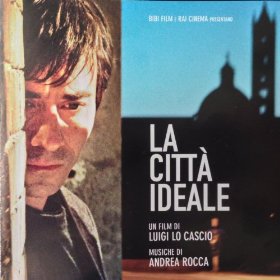
Vox:Lumen
I just started working on the music for Zata Omm’s new production Vox:Lumen. This is my fourth collaboration with the Canadian dance company lead by choreographer William Yong. Needless to say, its a very exciting project and I’m happy to be onboard – more soon…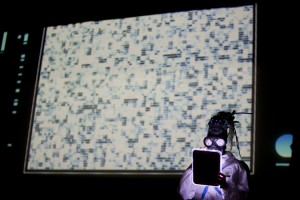
Photograph by David Hou from our previous collaboration Eight Ways from Mara
La Citta’ Ideale – Trailer
Fresh out of the trailer oven, here’s the official trailer of La Citta’ Ideale.
I’ll be in Rome for the press conference on the 9th of April.
****
Il trailer ufficiale de La Citta’ Ideale, che sara’ nelle sale italiane dall’ 11 Aprile.
Saro’ a Roma per la conferenza stampa il 9 di Aprile.
La Citta’ Ideale Reviews (updated)
La Citta’ Ideale is garnering some great reviews based on the screenings in Venice, the following “Venezia a…” events and its general release on the 11th of April.
Most can be found on the film’s Facebook page, and I am happy and grateful that some critics noticed the score (it doesn’t happen very often) and said some very kind things about it.
Lee Marshall’s excellent review for Internazionale magazine (in Italian) can be found here, Variety‘s Boyd Van Hoeij said that the film’s “assembly is pro, with the atmospheric, percussion-heavy score, including good use of the vibraphone, another plus”, Cineclandestino‘s review sees the music as being “so pertinent that it doesn’t just carry out a mere sonic accompaniment role”.
Cinefilos‘ review says that the film is “garnished with Andrea Rocca’s incisive score”, whilst Alessia Paris’ piece for Cinemabendato describes the score as being “an additional narrative theme, an additional layer of meaning and questioning, which challenges whilst adding to the visual level of the film”.
La Citta’ Ideale can also be followed on Twitter @cittaidealefilm.
